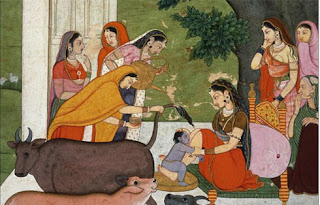Watercolor is also being called as aquarelle from French. It is defined as one of the painting method. A watercolor depicts the result of an artwork. It is a medium in which the paints are made of pigments floating in a water soluble medium. Paper remains as one of the conventional and most frequent sustain for watercolor paintings. The other may include are papyrus, bark papers, plastics, vellum or leather, fabric, wood, and canvas.
Since water colors are transparent it allows the light to reflect from the exterior of the paper thus providing a luminous effect. Watercolor can also be finished solid by adding some Chinese white. In the region of East Asia “brush painting or scroll painting” is called so when watercolor painting mixes with ink.
In Chinese, Korean, and Japanese painting it has been the leading medium, frequently in neutral black or browns. In India, Ethiopia and other countries also have an elongated practice of this painting.Fingerpainting with watercolor paints were originated in China.
The four major ingredients o Watercolor paint is:
- Pigments - natural or artificial, mineral or organic;
- Arabic gum - as a folder to hold the color in suspension and secure the pigment to the painting surface;
- Additives - like glycerin, ox gall, honey, preservatives to change the thickness, thrashing, toughness or shade of the pigment and vehicle mixture;
- Solvent - the material used to slender or weakens the paint for appliance and that evaporates when the paint hardens or dries.














